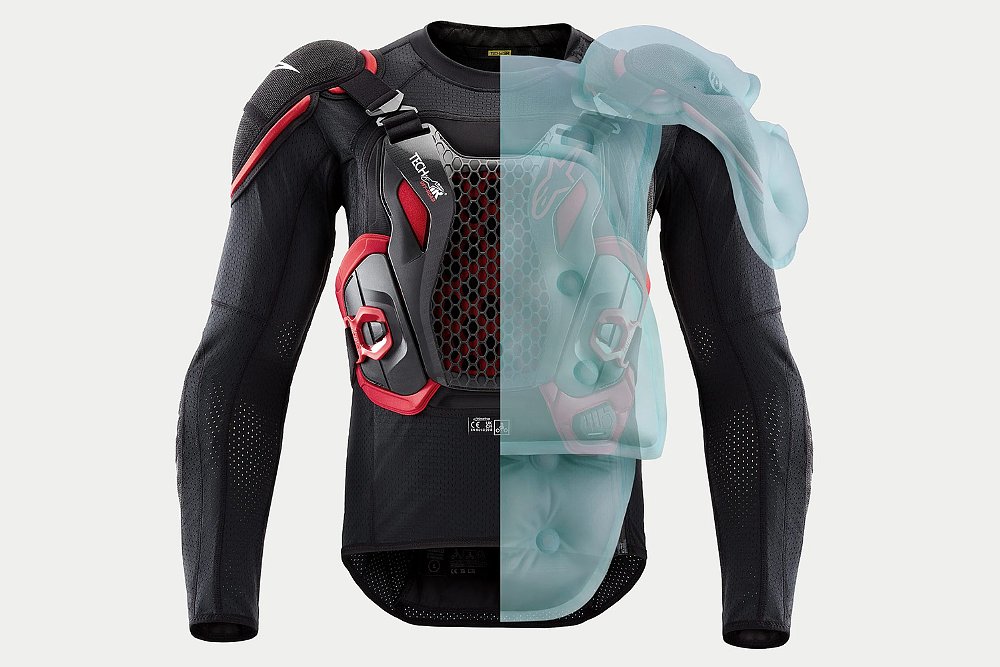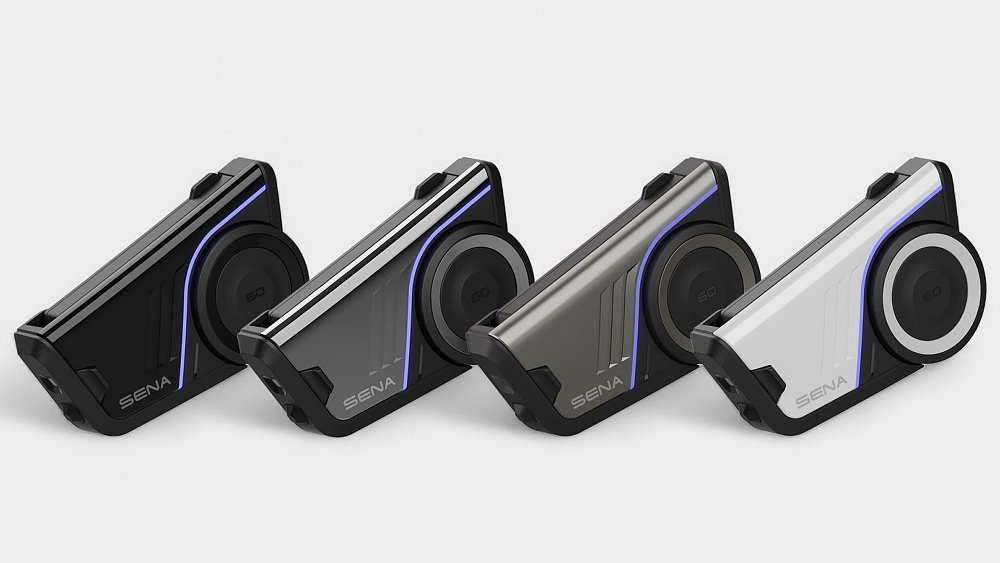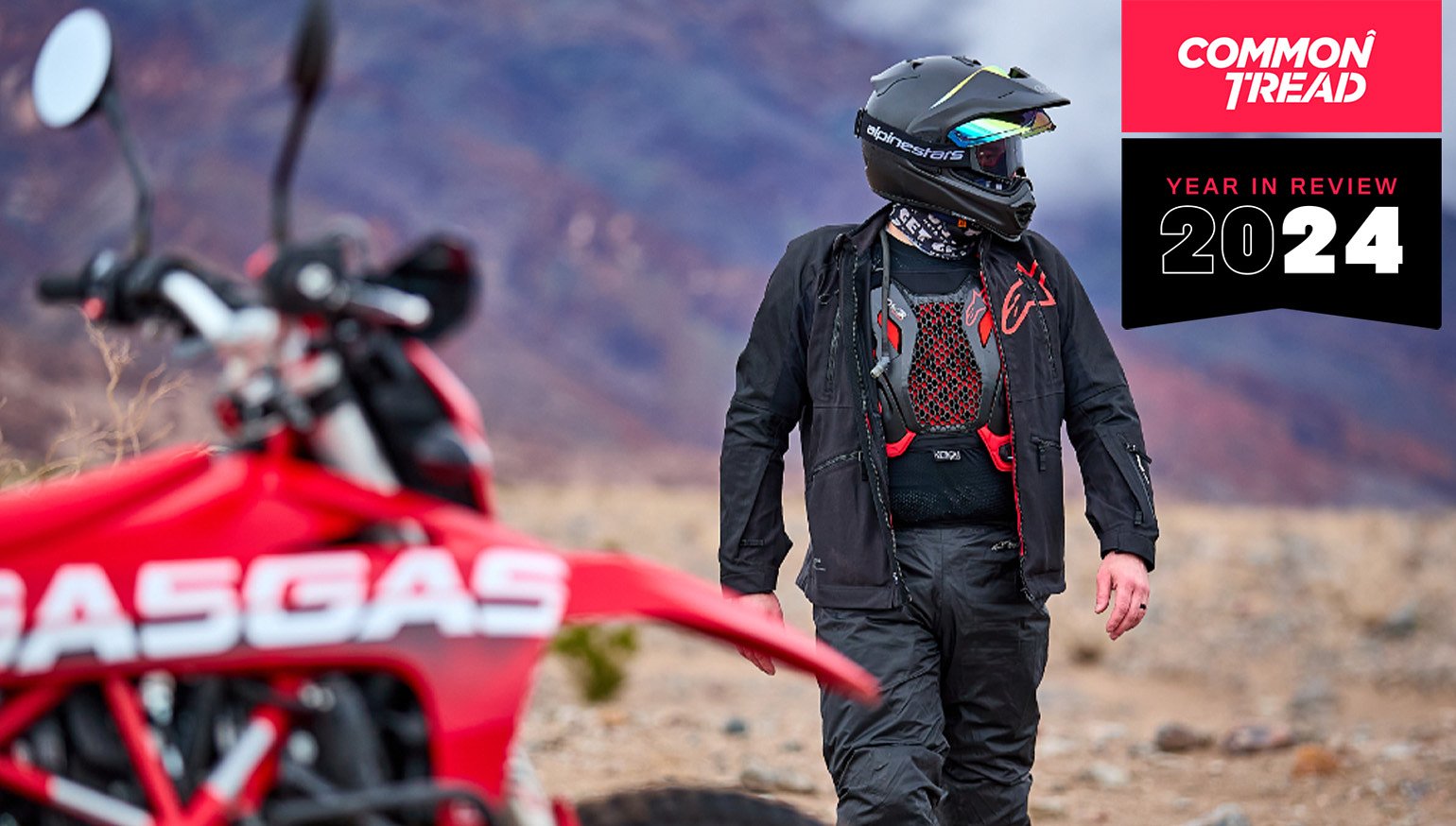At RevZilla, it’s our business to know every detail about the latest motorcycle gear. While most new products represent small improvements, a few mark significant steps forward. Those are the ones we highlight each year in our best motorcycle gear advancements year in review article.
Every year, we put our heads together with RevZilla’s resident gear expert to determine which emerging technologies transformed motorcycling gear for the better. This year was no exception. So, without further ado, here are the highlights of 2024.

Alpinestars Tech-Air Off-Road
Airbag systems, Alpinestars' Tech-Air line in particular, have reshaped the gear landscape over the last few years. The Tech-Air 5 made our annual list in 2020. We included its budget-friendly counterpart, the Tech-Air 3, in our 2022 edition. Despite singing Tech-Air's praises, one thing has always been missing: an off-road airbag system.
After seven years of development, after protecting Dakar Rally riders since 2019, Alpinestars finally unveiled the Tech-Air Off-Road in early 2024. Similar to the Tech-Air 3 and Tech-Air 5, the new off-road variant boasts six integrated sensors (three accelerometers and three gyroscopes). The difference is that it runs a dirt-specific algorithm, making it the first airbag system suitable for trail riding.
That enables the Tech-Air Off-Road to offer Enduro and Rally modes. The former suits low or medium speeds on the trail while the latter caters to the fast-flowing pace of desert racers. When deployed, the airbag unit also supports the rider’s head, rendering a neck brace unnecessary. The model even protects the rider on the way to the trail, thanks to its road-tuned Street mode.
Unlike other airbag systems, the Tech-Air Off-Road contains two canisters, meaning it can deploy the airbag twice before requiring canister replacements. That’s highly convenient on the trail. Alpinestars requires replacing the airbag unit after four deployments, but until then, users can swap out the canisters themselves.

This isn’t Tech-Air’s only dirt-oriented airbag, either. Alpinestars will debut the Tech-Air MX, a motocross airbag system, in 2025. It may have taken Alpinestars seven years to debut the Tech-Air Off-Road, but its arrival marks a watershed moment in a fast-growing market.
Crash-detecting comms
In May, Cardo announced its latest Bluetooth communicator, the PackTalk Pro. Yes, the range-topping model earned 45 mm JBL speakers and an auto on/off function, but the real selling point was its crash detection system. Now, Cardo wasn’t the first company to introduce the technology in the comm unit space. That distinction goes to UCLEAR and its Motion Infinity model, which released in 2019. Still, the PackTalk Pro is the first crash-detecting unit offered by one of the “Big Two” (Sena and Cardo) in the U.S. market.

The device's embedded IMU monitors acceleration and angular velocity on three axes to accurately identify a collision. When paired with a the Cardo Connect and Cardo Cloud apps, the unit also utilizes information from the user’s mobile device to confirm a crash. For example, should the PackTalk Pro fall out off its mount while in motion, the cloud-based system pulls GPS and velocity information from the phone. Cardo only activates its emergency protocol when both data sets confirm a crash.
Of course, the PackTalk Pro is just one of many products to offer crash detection, nowadays. From helmets to mobile apps, a growing range of options is now at the rider’s disposal. Even select BMW models now come with Intelligent Emergency Call as standard. That trend doesn’t look like it’s slowing down any time soon, either. Cardo’s entry may be the latest device to earn crash detection but we have a feeling it's far from the last.

The next wave in communications
Sena launched its newest flagship communicator — the 60S — last month. The model’s upgrades were all but expected. That includes Bluetooth 5.3 connectivity, which offers two-way HD intercom, four-way standard intercom, and a working distance of 1.2 miles. On top of that, Mesh 3.0 technology allows users to connect to six participants, open nine Mesh channels (groups), and expand working distance to five miles. All with better noise cancellation and improved intercom fidelity.
Yet, none of those features are as innovative as the 60S’s compatibility with the WAVE Intercom app. Based on VoIP (Voice over Internet Protocol) technology, the headset utilizes the cellular network to access the internet and connect riders. Effectively, VOiP bypasses the limitations of both Bluetooth and Mesh, as working distance and participant caps are virtually unlimited (as long as everyone maintains an internet connection). Riders can even connect to friends and initiate a group from hundreds of miles away.

Sena also touts the feature’s cross-brand compatibility, as any Bluetooth communicator can connect to the WAVE Intercom app (when paired to a mobile device). The advantage that the 60S holds over those units is that Sena integrated WAVE controls into its interface. That will remain a major draw for the 60S. After all, new developments are just that: new. It will take a few years for everyone else in the industry to catch up. That goes for all the entries on our list, and us gear fanatics at RevZilla can’t wait to see how they shape the gear landscape in the years to come.











